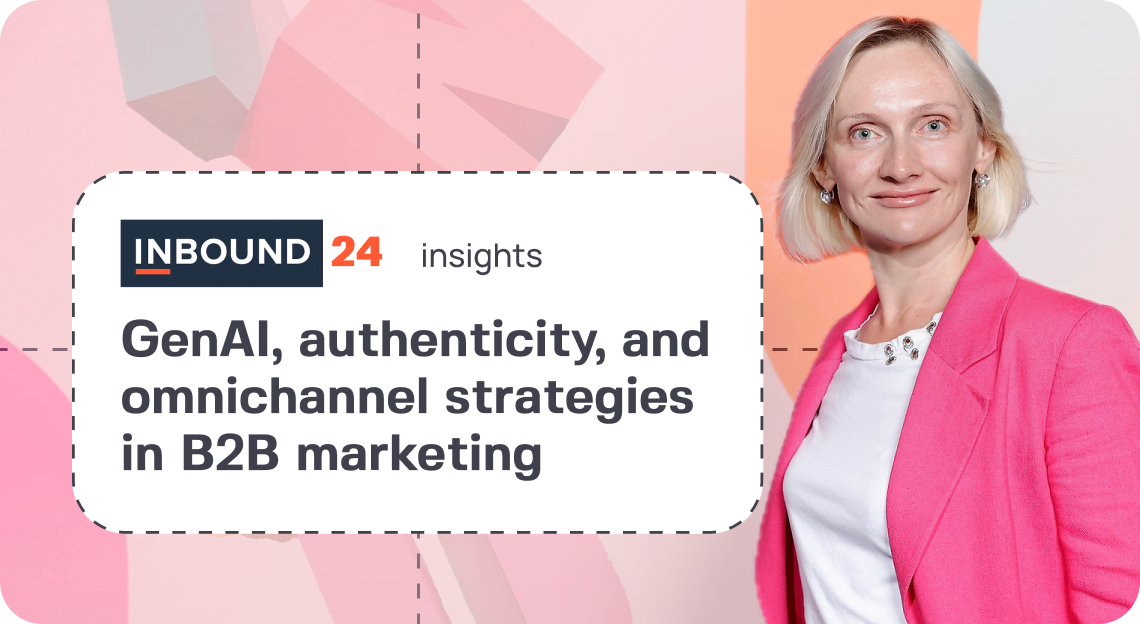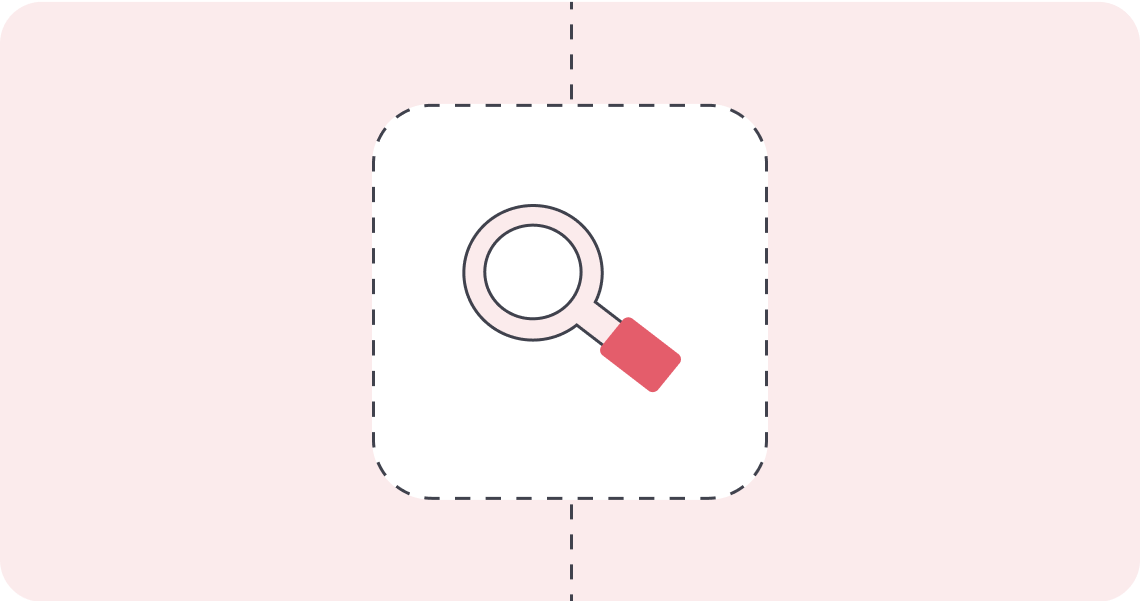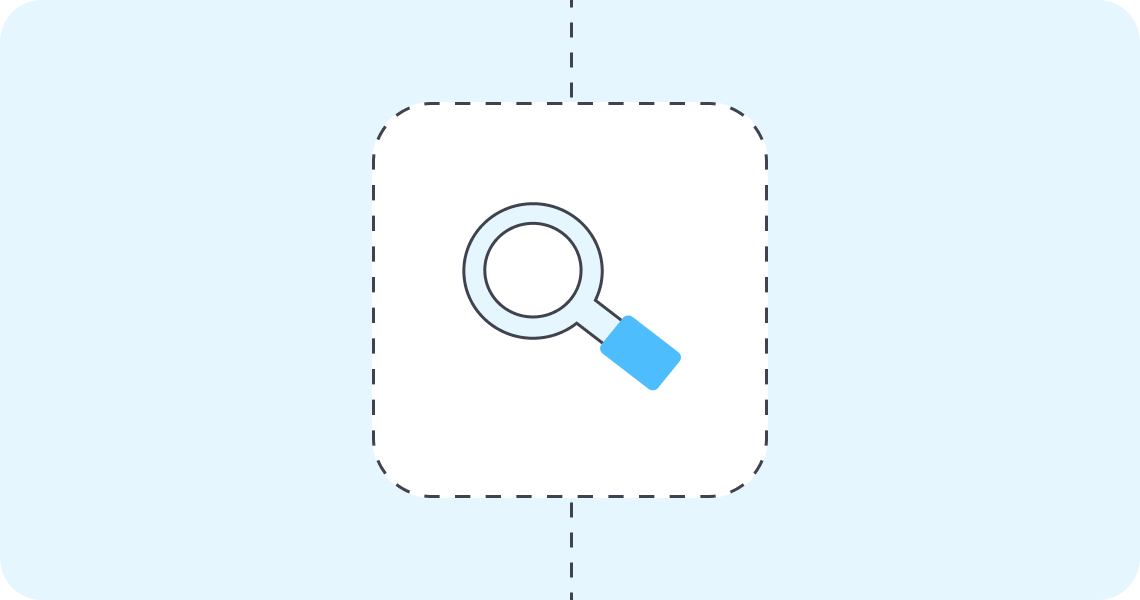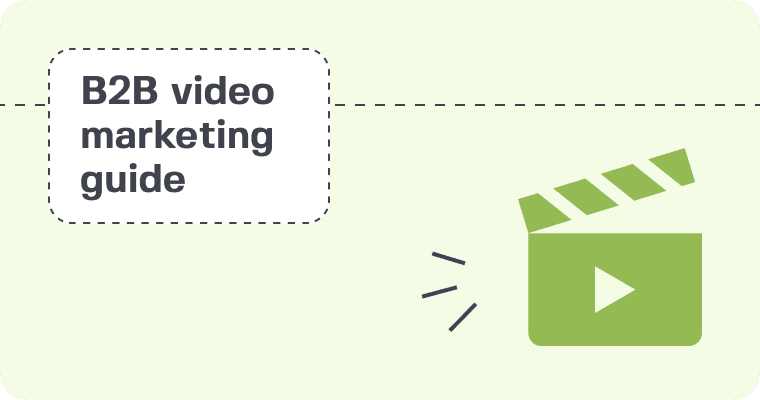In the ever-evolving world of marketing, one thing remains constant – the need to understand how people search for solutions to their problems.
This understanding has led to the evolution of marketing strategies, particularly the rise of digital marketing, which encompasses various strategies and tools such as content marketing, SEO, and inbound marketing strategies. But as the landscape continues to change, we are at the point where our beloved inbound marketing has to change to help B2B tech businesses rapidly grow. Here is how – meet Inbound Marketing 2.0.
How the search behavior works in B2B
When Inbound methodology was shared in 2005-2007 by Hubspot, Internet was a channel, and Google was our single navigator to surf it. HubSpot’s founders recognized this change early on, understanding how search engines evaluate the relevance of content, leading to the development of inbound marketing tailored to B2B tech growth.
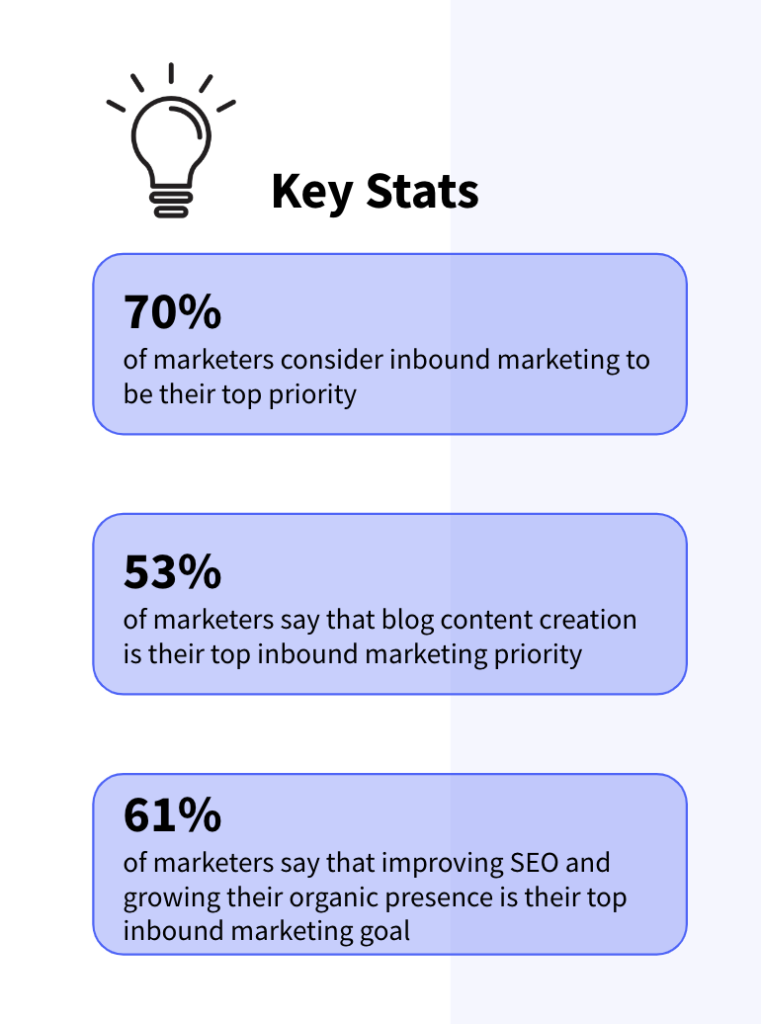

Inbound marketing is effective because it forges deep connections by addressing existing problems rather than imposing unwanted content, a common trait of outbound marketing.
Inbound marketing is effective because it forges deep connections by addressing existing problems of prospective customers rather than imposing unwanted content, a common trait of outbound marketing.
As a HubSpot partner, we’ve successfully implemented inbound marketing for 7 years, evolving with changing buyer behavior due to the rise of social networks.
But, since then Internet transformed into a digital environment with millions of digital channels, each of them has it’s own use case, and different audiences has a very different intent to use those channels.
the marketing landscape shifted with the AI boom in 2023, acting as a catalyst that revealed traditional inbound strategies were no longer adequate.
The transformation was gradual, in sync with changing market behaviors driven by social media and AI tools. Notably, ChatGPT played a pivotal role in reshaping search behavior.Additionally, platforms like TikTok gained prominence for their role in awareness-level searches, shaped by the unique search patterns of Generation Z. Gen Z’s distinct behaviors, with 58% using TikTok to explore new products and brands and 60% making purchases based on app content, are defining factors.
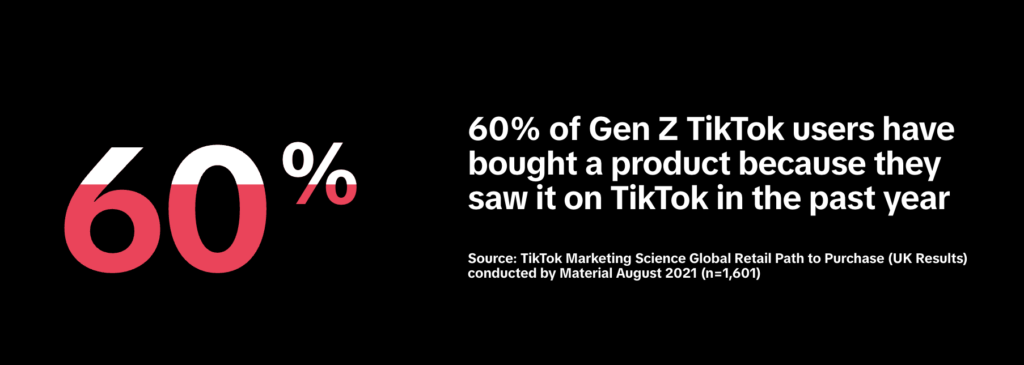

The buyer’s journey has become more complex, influenced by tighter budgets and extended decision-making processes. Recent insights indicate a shift in user preferences, with a growing desire for immediate, real-time answers instead of lengthy website texts.
In response, inbound marketing must adapt. for Marketer it means that we need to understand size and intent of our audience in each particular channel to design an efficient digital strategy. The question is, how will it evolve to meet these changing demands?
Inbound marketing works by fostering trust through clear, pressure-free communication, which is essential for building lasting relationships with potential clients.
Inbound Marketing 2.0 – a fresh approach:
The rapid transformation of buyer behavior necessitates an updated approach. To address the evolving challenges, we propose Inbound Marketing 2.0.
An effective inbound marketing campaign involves various strategies that come together to create a cohesive and successful marketing effort, much like an orchestra where each part must harmonize to produce a desirable outcome.
Inbound Marketing 2.0 takes the traditional stages of inbound marketing – attract, engage, delight – and tailors them to the demands of the fragmented inbound landscape and intricate B2B tech market decision-making processes.
4 pillars of Inbound Marketing
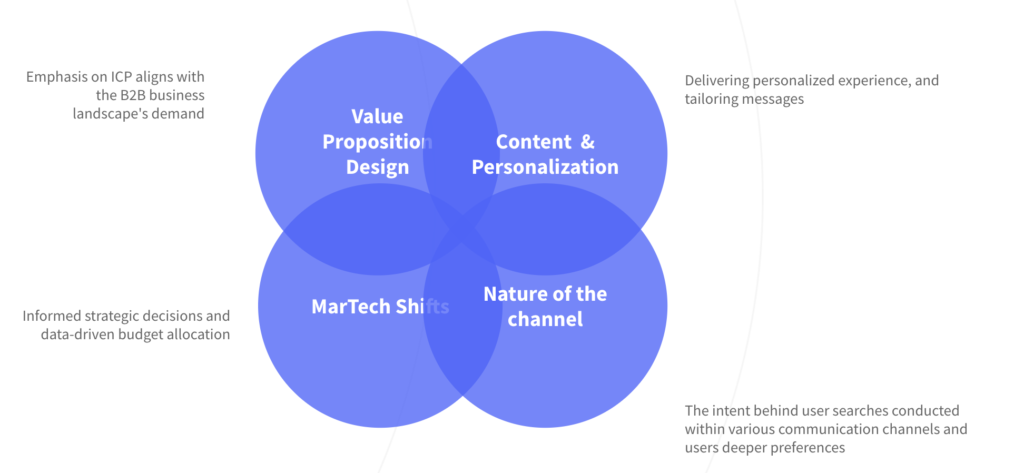

42DM’s Inbound Marketing 2.0 = Attract customers by creating valuable content and experiences tailored to them + integrate to informational bubble & decision-making environment on all stages for buyer’s journey
Stage 1: Attract
The goal: Attracting the target audience(s) across all relevant channels during their research process: Social Media, Website, Events
Traditionally: Drive more traffic to the website.
New strategy: Focus onICP & buyer persona pains and adjust them to the nature of the channel & the purpose it serves.
Channels & tactics:
- TikTok, where users search for simplified answers even for complex questions
- YouTube, a great place to publish videos that humanize brands
- Linkedin, for thought leadership to increase the visibility and role of experts and build brand trust & convert C-level decision makers
- Quora, where huge B2B companies can uncover their potential to empower those at the awareness stage
- Generative AI, for new opportunities for brand visibility
- SEO and SEM, which is still important for overall reach no matter the demand redistribution. Effective search engine optimization involves optimizing website content, conducting keyword research, and creating high-quality content to improve ranking in search results.
Metrics:
- Engagement rate
- Followers
- Organic Traffic
An excellent illustration of an adapted Attract stage is SalesForce and its product, EinsteinGPT. To raise awareness, the company employs a multi-channel approach. SalesForce initiates the journey by using TikTok to educate users about the fundamentals of generative AI, making it accessible to beginners. Next, they transition to LinkedIn to emphasize the business value of AI implementation, demonstrating how EinsteinGPT can benefit businesses. Finally, on their website, they delve into in-depth product features and present user testimonials, providing advanced product information.
Stage 2: Engage
The goal: Optimize for a multi-channel conversion path to grow the community and increase sales
Traditionally: Convert users through the funnel, acquire more customers.
New strategy: Improve campaign cost-efficiency through personalization. Develop the community and then integrate MarTech and advanced analytics to convert where the audience is.
Channels & tactics:
- Linkedin, a powerful tool to convert C-level decision makers
- Quora, Reddit and Slack to develop a strong community
- Chatbots for personalized experience
- Re-marketing efforts to convey our messages
- Lead nurturing and email marketing
- Marketplace, for a boost in targeted traffic among consideration and decision stage users
- Thought leadership, the experts role to build brand trust increases
Metrics:
- Subscribers
- Open Rate
- Leads
- MQLs
- SQLs
- Opportunities
Stage 3: Delight
The goal: Go beyond the LTV & reviews to strategize customer advocacy
Traditionally: Enhance Lifetime Value (LTV), garner more positive reviews.
New strategy: Fostering a happy community that contributes to your future growth.
Channels & tactics:
- Email nurturing, to foster relations
- Social Media, to share the success cases & company news
- Chat Bot for personalized experience
- Self-Serve Knowledge Base for easy navigation with the service/product
- On-Page Support Widget, for easy problem-solving
Metrics:
- Reviews
- Brand mentions
- LTV
- New users
- CAC
B2B Inbound Marketing Tactics
Search Engine Optimization (SEO) for B2B
SEO is key to lucrative inbound marketing strategies for B2B, helping you gain online visibility and drive traffic to your website. Focus on keyword optimisation, high quality content and building authoritative backlinks. Update your content and meta tags, headers and images regularly to stay up to date with the latest SEO trends. By targeting the right keywords and providing value, you can attract and convert more leads. Inbound marketing tactics can drive a lot of traffic through relevant keyphrases so SEO is a must have in your strategy.
Promoting Created Content With Guest Posts
Guest posting is a great way to get more visibility and authority in your industry. By posting on other blogs and websites you can promote your content to a wider audience. This drives traffic back to your website and boosts your brand’s credibility and relationships with other industry leaders.
Email Marketing
Email marketing is still a powerful tool in B2B inbound marketing to engage with prospects and gather leads. Segment your email lists to send targeted content to different audience segments. Use automation to nurture leads through marketing campaigns and consistently provide value with educational content, case studies and product updates. A well executed email marketing strategy will get you higher engagement and conversions.
Account-Based Marketing (ABM)
Account-Based Marketing (ABM) is a targeted approach that aligns marketing with the sales team to focus on high value accounts. By creating personalised content and campaigns for specific accounts ABM gets you higher ROI. Integrate ABM with your inbound strategy by tailoring your content and outreach to the unique needs of your target accounts and you’ll increase your chances of closing deals.
Social Media Marketing
Use social media to engage with your B2B audience. Share industry insights, promote your content and participate in relevant conversations to build your online presence. Use LinkedIn for professional networking, Twitter for real-time updates and Facebook or Instagram for broader reach. Social media is not just a channel for promotion but also a space to listen to your audience and get feedback.
Inbound and Outbound
Inbound marketing attracts prospects through value but combining it with outbound strategies in a well planned marketing campaign will amplify your efforts. Outbound tactics like paid advertising, direct mail and cold outreach can support your inbound campaigns by reaching a wider audience. The key is to keep the messaging consistent across both strategies so your prospects have a cohesive experience.
Inbound Campaigns
Inbound campaigns need to have a clear structure. Focus on high quality content, a user friendly website and targeted promotion. Mix of blog posts, whitepapers, videos and webinars to cater to different audience preferences. Make sure your campaigns are aligned to your overall business objectives and designed to nurture leads through every stage of the buyer’s journey.
Set Goals and KPIs
Setting clear, measurable goals and KPIs is the foundation of any inbound marketing campaign. What does success look like for your campaign – lead generation, increased website traffic or brand awareness. Use these goals to guide your strategy and measure over time.
Know Your Target Audience
Knowing your target audience is key to creating relevant and interesting content. Develop detailed buyer personas with demographic information, pain points and decision making processes. Tailor your content and messaging to the specific needs and challenges of your audience and make it easier to attract and convert leads.
Create an Engaging and Lovely Website
Your website is the foundation of your inbound marketing strategy. Make sure it’s user friendly with clear navigation, fast loading times and mobile responsiveness. Add engaging content like blog posts, videos and case studies that provide value to your visitors. Use calls-to-action (CTAs) strategically to guide users through your site and convert them into leads.
Compete and Opportunities
Analyse your competition and the opportunities in your industry. Find out what your competitors are doing well and where there are gaps you can fill. Use this to differentiate your brand and create unique value propositions that set you apart in the market.
Content Map
Content mapping is key to making sure your content aligns with your buyer’s journey. Create a content plan that outlines what content to create for each stage of the funnel – awareness, consideration and decision. This will help you deliver the right content at the right time and increase conversions.
Promote
Promoting your content is just as important as creating it. Use a mix of organic and paid channels to distribute your content and reach your target audience. Leverage social media, email marketing and partnerships to amplify your reach. Monitor the performance of your content and adjust your promotion strategies based on the results.
Results and Strategy Updates
Measuring the performance of your inbound marketing is key to continuous improvement. Use analytics tools to track key metrics like website traffic, conversion rates, lead generation and customer engagement. Review your performance against your KPIs regularly and adjust your strategy accordingly. This will ensure your inbound marketing is working and aligned to your business objectives.
B2B Inbound Marketing Challenges 2024
2024 is tough for businesses to reach their audience through inbound marketing. The digital landscape is moving so fast, B2B companies need to get better at standing out. One of the biggest challenges is the amount of content on the internet, making it hard to get noticed by potential customers.
Finding Top Talent
Finding and retaining marketing professionals is getting harder. As demand for digital skills grows, companies need to offer competitive salaries and benefits and opportunities for professional development to attract top talent.
Retaining Customers
Customer retention is key to long term business growth. B2B companies need to focus on building strong relationships with their customers by providing consistent value, personalized experiences and exceptional customer service.
Marketing and Sales Alignment
Misalignment between marketing and sales teams can kill inbound marketing. Make sure these teams work together with shared goals and open communication to convert leads into customers.
Change
The digital landscape is always changing and B2B companies need to be able to adapt to new trends, technologies and consumer behaviour. Being ahead of the curve requires continuous learning and a willingness to try new things.
Choosing the Right Tools
With so many marketing tools out there, choosing the right ones can be a nightmare. Companies need to evaluate tools based on their specific needs, scalability and ease of integration with existing systems.
AI
AI is becoming more important in B2B marketing, from automating mundane tasks to providing insights through data analysis. But integrating AI into your marketing strategy requires a clear understanding of what it can do and how it will impact your business.
Operational Efficiency and Productivity
Operational efficiency and high productivity is an ongoing challenge. B2B companies need to streamline processes, remove bottlenecks and use technology to optimise their marketing.
Navigating Changing Consumer Expectations
Consumer expectations are always changing, especially around personalisation and customer experience. B2B companies need to stay on top of these changes and adjust their marketing accordingly to meet and exceed customer expectations.
Marketing on a Budget
Budgets often limit the scope of marketing initiatives. B2B companies need to prioritise their marketing spend and focus on high impact strategies that deliver the best ROI.
Social Responsibility
Social responsibility is important to consumers and B2B companies are not immune to this. Include social responsibility in your inbound marketing to improve your brand and appeal to socially conscious customers.
The Future of Inbound Marketing:
Change is happening at an unprecedented pace, challenging marketing agencies to adapt. While this can be daunting, it presents opportunities to revise our strategies in real-time, rather than a yearly or bi-yearly event. Real-time data can feed our decisions, and with flexibility, we can embrace the incredible developments that technology offers. So, let’s embark on the journey of implementing Inbound Marketing 2.0 together to achieve growth in 2024!
Inbound Marketing 2.0 recognizes the changing landscape and offers a structured approach to help you navigate these uncharted waters. By adapting to the evolving behavior of your audience and leveraging the latest tools and platforms, you can stay ahead in your B2B marketing endeavors.
FAQ
What is B2B inbound marketing?
B2B inbound marketing is about attracting business customers with valuable content and experiences that meet their needs. Not traditional marketing which interrupts customers with ads, inbound marketing pulls them in with content, SEO and social media. The goal is to build trust and long term relationships with prospects and customers by solving their problems and offering solutions.
What’s the difference between inbound and outbound?
The difference between inbound and outbound marketing is how you reach potential customers. Inbound marketing is about attracting and engaging prospects with valuable content, SEO and social media so they can find you when they are ready. Outbound marketing is about pushing messages out to a big audience through cold calls, direct mail and ads. Inbound is generally more cost effective, relationship building and long term, outbound is more interruptive and quick but can be effective for short term results.
What are the benefits of B2B inbound marketing?
B2B inbound marketing has several benefits, cost effective, higher quality leads and better customer relationships. By attracting prospects who are actively looking for solutions, inbound marketing tends to generate more qualified leads who are already interested in what you offer. It also builds brand authority and trust as the content you create positions your business as a thought leader in your industry. And inbound marketing builds long term customer relationships by providing value through content which can lead to higher retention rates.
What’s the role of social media in B2B inbound marketing?
Social media is a key part of B2B inbound marketing by providing a platform to engage with your target audience, share valuable content and build brand awareness. It allows businesses to connect with prospects on a more personal level, participate in industry conversations and gather insights into customer behaviour. LinkedIn, Twitter and even Facebook can be powerful tools to distribute content, drive traffic to your website and nurture relationships with potential clients. Social media also allows businesses to listen to and respond to their audience and amplify their inbound marketing efforts.
Why is content evergreen?
Ongoing content is key to B2B marketing because it keeps your brand relevant, keeps you top of mind with prospects and provides value to your audience. Regularly updated content supports SEO by keeping your website fresh and improving its search engine rankings. It allows you to address the changing needs and pain points of your target audience and position your business as a go to resource and thought leader in your industry. Content creation helps nurture leads throughout the buyer journey and drives higher engagement and conversions.

